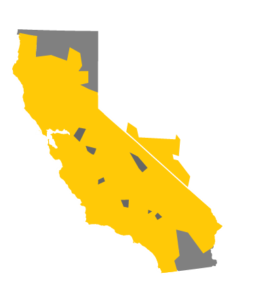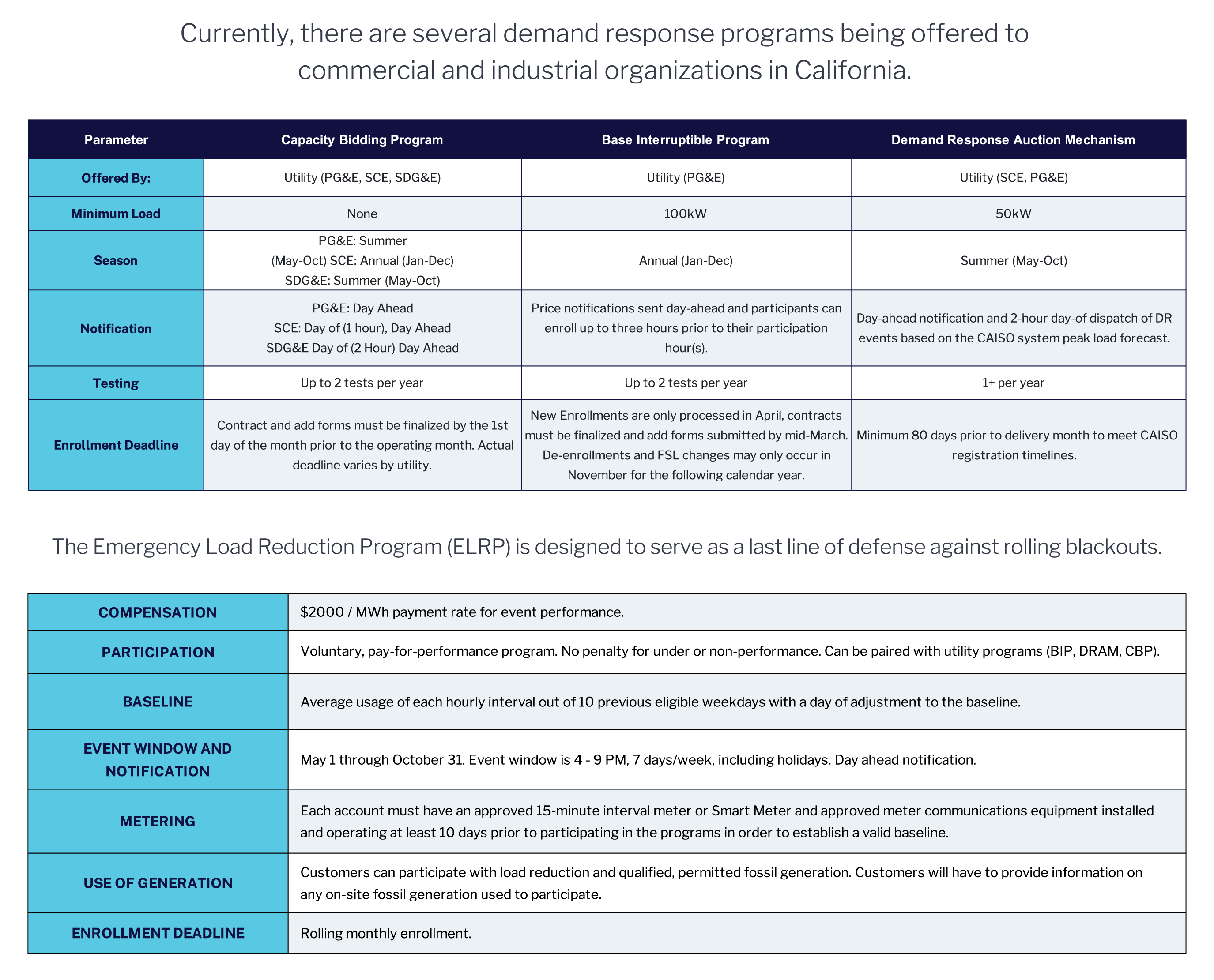
California
It’s an exciting time to be an energy-consuming organization in California. That’s because we’re on the cusp of a new era in clean energy. Our drive toward generating 100% of our state’s energy by way of renewable sources by the middle of this century is one no other state can match.
CPower wants to help your organization lead California toward a more sustainable future with demand-side energy management.
CPower can help monetize your energy assets in the Golden State.
Start the Conversation with CPower
Fill out the form below or Call CPower 844-276-9371
About the California Energy Market
California’s wholesale energy market includes a day-ahead process and a real-time process. The products and services traded within the California market help CAISO serve load and meet the state’s reliability needs.
The day-ahead market opens seven days in advance of the targeted trading day and closes at 10 AM on the day before the energy will be used. Through three progressive stages (Market Power Mitigation, Integrated Forward Market, Residual Unit Commitment), the market receives buy and sell bids, guarantees supply will meet demand, clears the price, and settles the transactions.
The real-time market is a spot market in which utilities can buy power to meet the last few increments of demand not covered in their day-ahead schedules. It is also the market that secures energy reserves, available for ISO use if needed, and the energy needed to regulate transmission line stability.
Demand Response Programs in California
Demand Response programs pay organizations for using less energy when the grid is stressed or energy prices are excessively high.
The major underlying value of demand response programs in California is the resource adequacy capacity they provide for the grid.
Currently, demand response programs are administered by California’s three regulated investor-owned utilities: Pacific Gas & Electric, Southern California Edison, and San Diego Gas & Electric.
The Capacity Bidding Program (CBP) is an aggregator-managed, economic demand response program that operates with Day-Ahead and Day-Of options and runs year-round in the SCE Territory and May 1 through October 31 elsewhere throughout the state.
The CBP has both Day-Ahead and Day-Of notifications. The program is the first CAISO calls when faced with rising demand that threatens the grid’s balance. The CBP is price-triggered and is called more frequently compared with other DR programs in California.
Base Interruptible Program (BIP) is intended to provide load reduction on the system on short-notice (15-30 minutes) when the utility issues a curtailment notice in response to a system emergency. Customers enrolled in the program will be required to reduce their load down to or below its Firm Service Level (FSL).
Among its requirements is a mandatory performance commitment. The BIP is the most lucrative of the three California DR programs.
Demand Response Auction Mechanism (DRAM) is a pay-as-bid program developed in 2014 under the guidance of the California Public Utility Commission (CPUC) in an effort to harmonize utility-based reliability demand response with CAISO, the state’s grid operator.
The second line of defense for the grid operator, DRAM is called after the CBP and therefore will have fewer events than the CBP. DRAM has a day-ahead notification system.
Emergency Load Reduction Program (ELRP) is designed to pay energy users for reducing consumption during periods of electrical grid emergencies. The ELRP Program is called upon only as the last line of defense against rolling blackouts for the California grid operator (CAISO).








